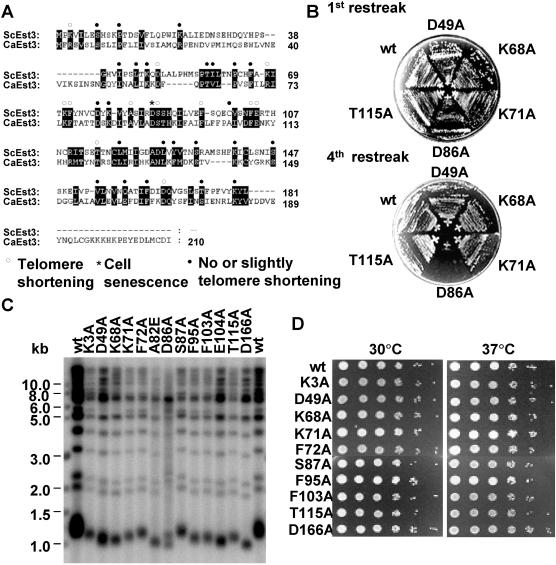Figure 3.
Mutations of conserved residues in EST3 result in telomere shortening and do not show temperature sensitivity. (A) Sequence comparison of ScEst3p and CaEst3p. Sequences of EST3 in S.cerevisiae and C.albicans were obtained from SGD (Saccharomyces Genome Database: http://db.yeastgenome.org/cgi-bin/locus.pl?locus=Est3) and aligned with GENEDOC program. Positions that were mutated are indicated above the sequence of ScEst3p. Open circles indicate that mutation at this position caused telomere shortening; the asterisk indicates that the cell went senescence, while the solid circles mean little or no telomere shortening. (B) Growth of est3 mutant cells. The wild-type and mutant yeast cells (D49A, K68A, K71A, D86A and T115A) were streaked on selective SD plates four times, with each streak being counted as 25 generations. Only the first and fourth streaks are presented here. (C) Telomere Southern blot of est3 mutants. The mutant icons are labeled on the top. (D) Temperature sensitivity test of est3 mutants. The 30°C overnight cultured yeast cells were diluted to OD600 = 0.3, 3 µl of 10-fold serially diluted cells were spotted on the Leu− SD plates and the plates were incubated at 30 and 37°C, respectively. Isogenic strains tested are noted at the left.

